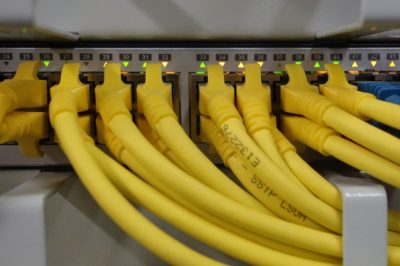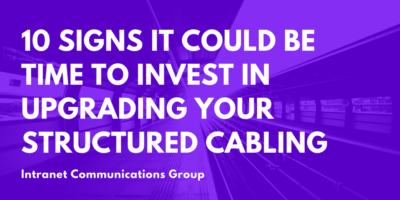1. Your network requires constant repair
Are you repeatedly looking for and calling technicians to fix your network or troubleshooting problems with your network on your own? A single provider of the low voltage cabling needed to provide the backbone of a network could help you to organize your infrastructure and reduce costs.
2. You’ve moved into a new office and the current configuration doesn’t suit your needs
The cabling is CAT 3, and does not have the bandwidth for VoIP and your conference room AV needs. A properly designed network infrastructure solves this problem by having a plan in place tailored specifically for your location with its current/future needs in mind.
3. You have no jacks for your cables, the computer is connected directly to the router or switch
Jacks not only organize your network and simplify the wiring by placing it in the walls or ceiling, they also increase the longevity of your network as the formerly exposed wires would need replacement. Now only the patch cord connecting the computer to the jack would need to be replaced in the event of an issue with the wiring.
4. You do not have a professional managing your network infrastructure
Do you still troubleshoot network issues on your own and is it taking up more of your time than you can afford? As a small business, you want to dedicate all your time to satisfying your customers’ needs. Repeated issues with the network can complicate your day and significantly reduce productivity.
5. Your network is not achieving required upload and download speeds
A properly cabled network will achieve higher speeds as it facilitates the transfer of data from your service provider to your computer using the properly rated cabling and correct infrastructure.
6. Wires are making your location a mess
A mess of wires is not only unappealing and dangerous, it can cost you money. Exposed wires often require replacement. This is money out of your pocket.
7. You still have an analog phone system (not VoIP)
Analog phone systems work but if you have one you are overpaying significantly for a service that could be provided to you at a much lower cost. This includes long distance phone calls. VoIP also allows interconnectedness between users within the network.
8. Your wireless network does not cover your entire location
Do you have a building or campus without adequate WiFi coverage? A structured cabling specialist can fill the holes in your network using Inside Plant (ISP) and Outside Plant (OSP) wiring and Access Points.
9. You need an IP Security System
Your current video security system isn’t sufficient to fit your needs. Maybe you can’t manage your security system digitally, store footage, or monitor it live over the network. An IP security system uses Power of Ethernet to power the cameras and can allow for high resolution video.
10. Some of your cables just don’t work
Your cable runs maybe be too long, the wires may be too tightly bunched or faulty, they may bend more than they are rated to, or they could be terminated improperly. A structured cabling technician can test every wire at your location to be sure your network is functioning at peak levels.













